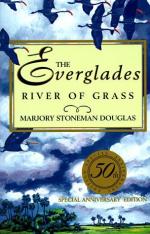
|
| Name: _________________________ | Period: ___________________ |
This test consists of 15 multiple choice questions and 5 short answer questions.
Multiple Choice Questions
1. The real estate boom spread throughout _______________ Florida.
(a) Northeastern.
(b) Southwestern.
(c) Southeastern.
(d) Northwestern.
2. Why did most European immigrants go further west?
(a) They did not feel safe in Florida.
(b) They did not want to compete with the slave labor in Florida.
(c) They did not want to live in a tropical climate.
(d) They feared the Indians.
3. In ____________, Carl Fisher laid out the plans for Miami Beach and built hotels.
(a) 1885.
(b) 1915.
(c) 1925.
(d) 1915.
4. The Central and Southern Florida Flood Control Project would manage the water of the Everglades and the cities through what?
(a) The changing of salt water to fresh water.
(b) The importing of fresh water.
(c) A series of pumps.
(d) A series of water restrictions.
5. The survivors were taken to _________________ while the Indians retreated into the Everglades.
(a) Ft. Lauderdale.
(b) St. Augustine.
(c) Tampa.
(d) Miami.
6. ________ hundred people followed him and lived in the commune he established.
(a) Six.
(b) Four.
(c) Two.
(d) Eight.
7. This chapter is a result of a __________ discussion with the author about what has happened in the forty years since the book was first published.
(a) 1987.
(b) 1967.
(c) 1977.
(d) 1997.
8. What were there many of in Miami at this time?
(a) Farmers and teachers.
(b) Cowboys and Indians.
(c) Students and young families.
(d) Bathers and casinos.
9. Eventually the first canal was dredged by _________________.
(a) Henry Deveau.
(b) Hank Dillon.
(c) Harrison DeVane.
(d) Hamilton Disston.
10. When did the Army move out of Florida?
(a) Before war began.
(b) After WWI.
(c) After the Spanish-American War.
(d) After the peace.
11. When Broward became governor in __________, they again tried to drain the Everglades.
(a) 1895.
(b) 1925.
(c) 1905.
(d) 1915.
12. The Everglades still has problems, as does the rest of the area, because of what?
(a) Pollution.
(b) The population.
(c) Cattle.
(d) Erosion.
13. The ________________ problems caused by drainage began to affect vegetable growing and livestock as well as the water supply of the cities.
(a) Oil spill.
(b) Salt water.
(c) Polluted water.
(d) Lack of water.
14. By ___________, the government was told that Disston would not be able to drain all of the Everglades.
(a) 1902.
(b) 1892.
(c) 1882.
(d) 1912.
15. How did the Indians make a living?
(a) By selling Indian souvenirs.
(b) By capturing birds and selling them to Havana.
(c) By selling alcohol.
(d) By capturing wild animals and selling them to zoos and circuses.
Short Answer Questions
1. Henry M. Flagler constructed a hotel in ______________ and was also interested in Florida railroads.
2. Who was the first group of white men to ever cross the Everglades from east to west?
3. Why did the rowing of the answer to 164 become more important in 1960?
4. After ___________________, people decided to grow sugar cane in Florida.
5. A lighthouse was built at Key Biscayne in _____________.
|
This section contains 457 words (approx. 2 pages at 300 words per page) |

|




